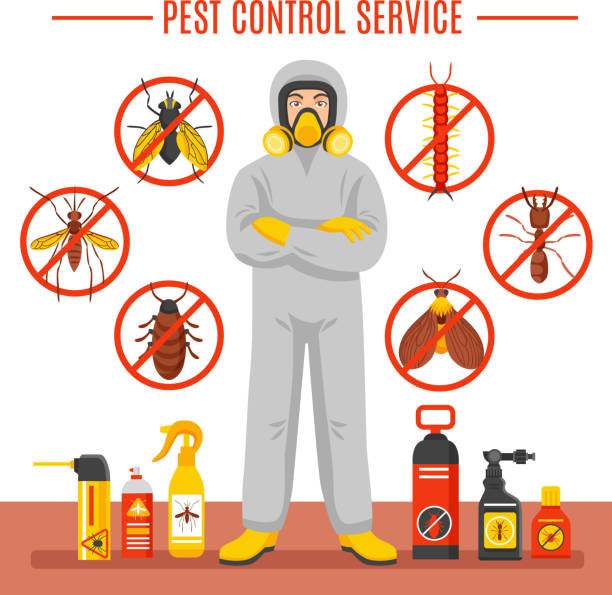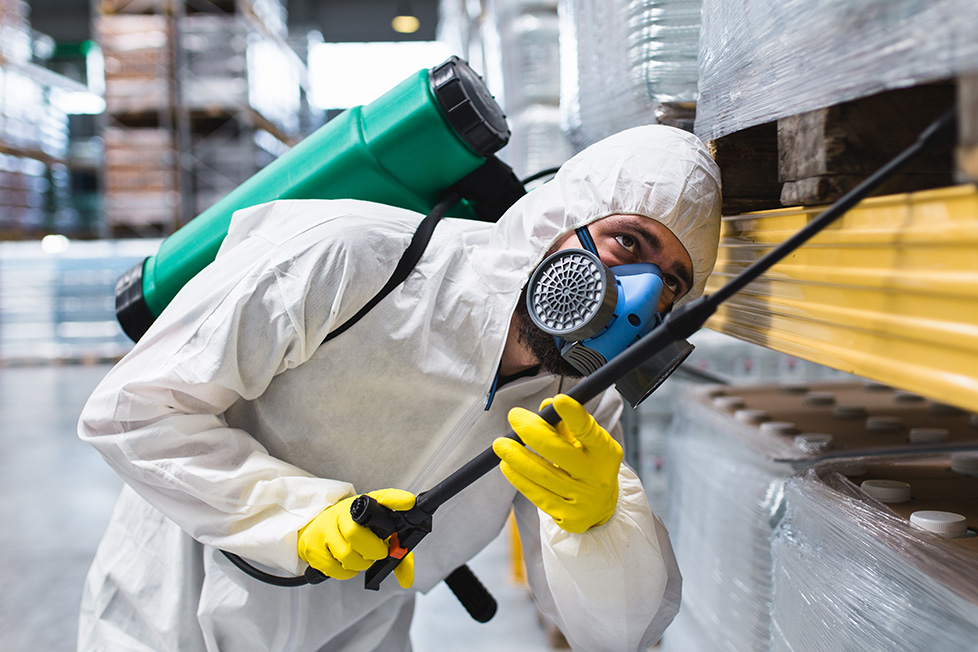Eco-Friendly Insect Control Approaches for Taking Care Of Wild Animals in Urban Areas
Urban locations frequently discover themselves at the junction of human task and wild animals, leading to special difficulties in bug administration. Eco-friendly strategies emphasize lasting coexistence, using techniques such as habitat modification and natural repellents to alleviate human-wildlife problems. These approaches not only secure the setting yet additionally boost neighborhood involvement in wild animals monitoring. As city populaces remain to grow, comprehending the characteristics of wild animals communications ends up being progressively critical. What ingenious approaches can be applied to make certain both eco-friendly equilibrium and city security? Exploring this question reveals an engaging landscape of prospective options.
Recognizing Urban Wildlife Characteristics
Comprehending Urban Wild animals Characteristics is necessary for establishing effective and eco-friendly pest control approaches. Urban areas are increasingly coming to be habitats for numerous wildlife species, driven by variables such as habitat fragmentation, food schedule, and human infringement. Identifying these dynamics permits a nuanced approach to pest administration that straightens with environmental concepts.
Urban wildlife usually consists of species such as raccoons, squirrels, and birds, which adjust to city environments, discovering niches in eco-friendly rooms, parks, and even suburbs. Their visibility can result in problems with humans, especially when they make use of personnels for food and shelter. Understanding the habits and eco-friendly roles of these types notifies techniques that lessen adverse interactions while promoting biodiversity.
Moreover, recognizing the interdependencies within urban ecosystems assists in determining critical areas for habitat preservation and reconstruction. This understanding adds to the growth of incorporated pest management (IPM) techniques that think about the ecological balance, thereby decreasing reliance on dangerous chemicals. By cultivating conjunction between people and metropolitan wildlife, cities can create healthier environments that profit both citizens and neighborhood ecological communities, leading the means for lasting city living.
Natural Repellents and Deterrents
Natural repellents and deterrents provide a sustainable option to conventional insect control methods by using the power of nature to maintain undesirable species at bay. These environmentally friendly options typically utilize plant-based active ingredients, necessary oils, and various other normally happening materials that prevent parasites without hurting the atmosphere.
One effective all-natural repellent is peppermint oil, which is understood to drive away rats and bugs. Its strong aroma is undesirable to numerous pests, making it a prominent choice for city setups. Vinegar and citrus peels can serve as deterrents, as their solid odors are typically unappealing to numerous wildlife.
In addition, diatomaceous planet is a natural powder that can be spread out in areas prone to parasite activity, effectively drying out and deterring pests without positioning dangers to non-target species. Garlic sprays and neem oil are acknowledged for their capacity to repel a large range of insects, consisting of both insects and larger wildlife.
Applying these natural repellents not just reduces reliance on chemical pesticides however additionally promotes a much healthier metropolitan ecological community, promoting a more well balanced conjunction in between people and wild animals. By utilizing these methods, city locations can effectively handle pest populaces while decreasing ecological impact.
Habitat Alteration Techniques
Efficient environment alteration techniques play a vital duty in lasting bug monitoring by altering the environment to make it less for pest invasions. By comprehending the ecological dynamics of urban locations, home proprietors can implement tactical adjustments that prevent bugs while advertising biodiversity.
(Fire ant control Port Charlotte)One key technique includes keeping proper sanitation. This includes routine waste elimination, securing trash containers, and eliminating standing water to decrease reproducing websites for pests and rats. Additionally, landscape design methods such as choosing indigenous plants can boost ecological balance, offering habitats for advantageous microorganisms while lessening sources for parasites.
An additional important method is to seal access factors in buildings. Examining and repairing cracks in foundations, walls, and home windows can dramatically minimize bug gain access to. Producing physical barriers, such as fences or plant barriers, can prevent wildlife activity into human-inhabited areas.
Integrated Insect Monitoring Practices
Structure upon habitat alteration methods, integrated parasite management (IPM) methods supply an alternative approach to regulating insect populaces while reducing environmental effect. IPM combines numerous techniques, consisting of biological, social, mechanical, and chemical controls, to accomplish effective bug management.
Organic control involves the intro of all-natural predators or bloodsuckers to minimize pest populations. Social practices, such as plant rotation and cleanliness, interfere with pest life cycles and reduce their habitats - Pest Control. Mechanical controls, like catches and barriers, supply instant alleviation from insect stress without chemical treatment
Chemical controls are used as a last resource, focusing on targeted applications that limit injury to non-target species and the atmosphere. The option of eco-friendly chemicals, when necessary, is important to the IPM framework. Furthermore, keeping track of bug populaces and assessing potential damage aids notify decision-making, guaranteeing that interventions are timely and efficient.
Neighborhood Involvement and Education

(Barn Fly Control)Workshops and informational sessions can equip residents with knowledge concerning indigenous varieties, habitat preservation, and reliable safe parasite monitoring techniques. Cooperation with institutions, regional organizations, and government firms further boosts educational outreach, ensuring that vital information reaches diverse target markets.
Furthermore, community-led initiatives, such as community clean-up days and environment reconstruction projects, not only promote biodiversity but likewise enhance neighborhood connections. Pest control service. By motivating locals to share their experiences and monitorings, neighborhoods can create targeted strategies that address specific neighborhood parasite problems
Integrating feedback from locals into pest monitoring intends allows a more responsive and adaptive approach to wildlife difficulties. Ultimately, notified and engaged communities are crucial to attaining long-lasting success in environmentally friendly parasite control, causing healthier metropolitan atmospheres that value both human and environmental requirements.

Verdict
Finally, environment-friendly insect control approaches offer sustainable solutions for managing city wild animals. By focusing on habitat adjustment, making use of natural repellents, and carrying out incorporated bug administration techniques, communities can promote an unified conjunction with neighborhood fauna. In addition, involving citizens with education and learning improves recognition and urges accountable wildlife communications. Eventually, these strategies not only shield biodiversity but additionally advertise ecological health and wellness, making sure city areas remain vibrant ecological communities where humans and wild animals site link grow together.